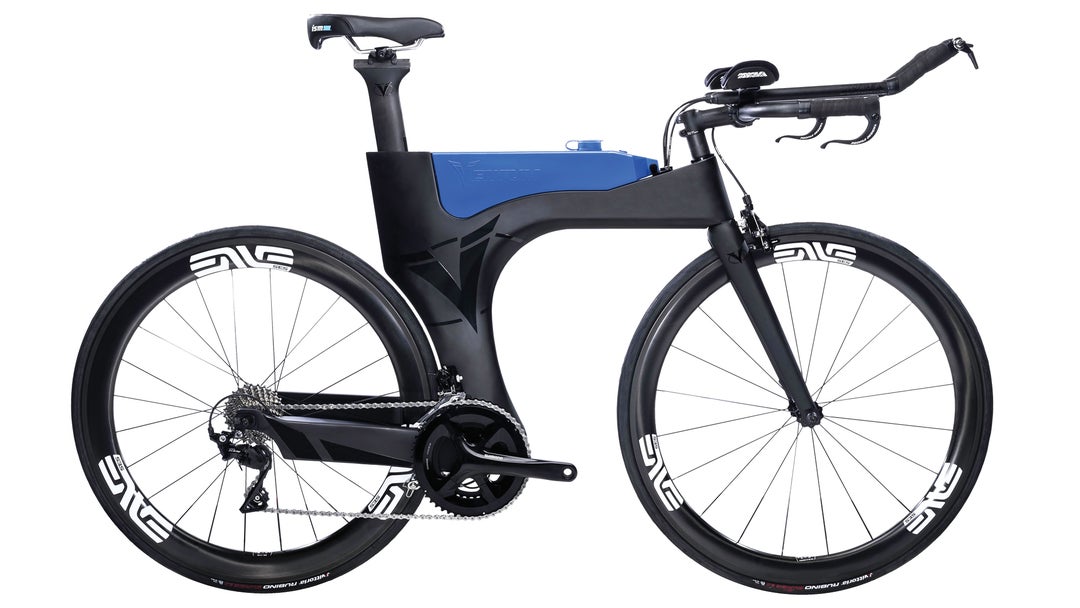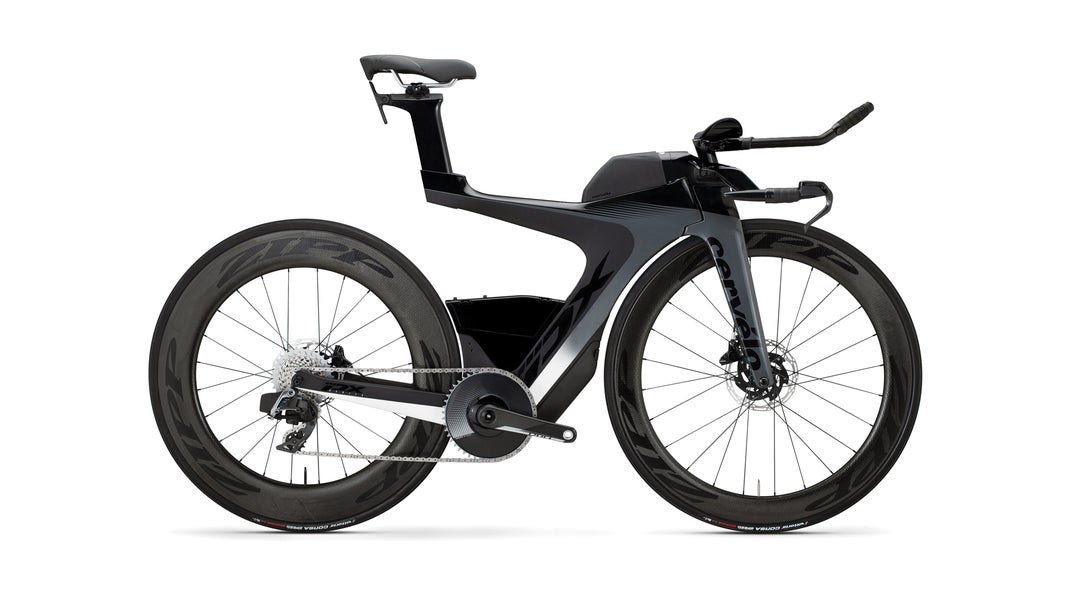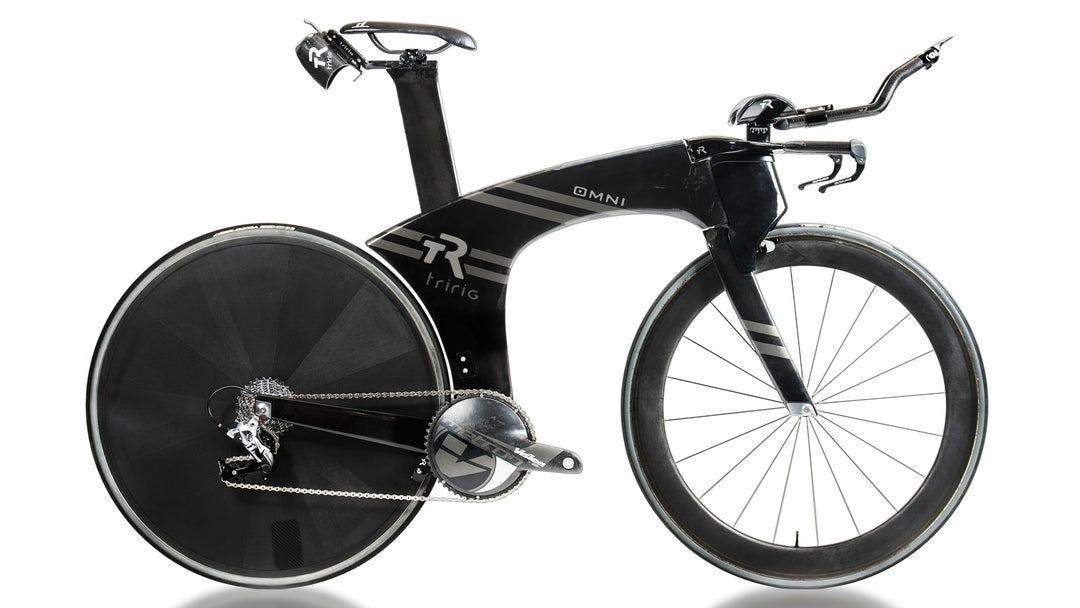New perk! Get after it with local recommendations just for you. Discover nearby events, routes out your door, and hidden gems when you sign up for the Local Running Drop.
Though non-double-diamond bikes (NDD) are nothing new, their popularity is finally starting to gain momentum with an unconventional design that aids aerodynamics while also boosting comfort for long rides and races. These unique shapes—known as “non-double-diamond” for their lack of a diamond shape formed by the seatstay, seat tube, and chainstay or the top tube, seat tube, and downtube—originally appeared a few decades ago, but failed to gain any true traction aside from a small devoted following. Today, even a major tri bike brand has dipped its toes into the tiny NDD pond, and we also have a range of models from entry to no-holds-barred level.
For this face-off, we’ve broken down four bikes into two price points with two basic shapes each: beam style—which is “missing” a seat tube—and what we’ll call Lotus style after the now-defunct Lotus 108 monocoque bike that was developed sans-downtube.
Budget Non-Double-Diamond Bike Face-Off
Dimond Carbonado
$3,500, 20lbs. 12oz.
Dimond.com

Brought to you from the scrupulous mind of pro triathlete TJ Tollakson, the Carbonado is the new entry-level bike in Dimond’s growing lineup. Made in the true tradition of beam bikes, the Carbonado sports a removable beam that aids in travel (Tollakson also makes bike cases under his Rüster Sports brand). Said to increase aerodynamics by entirely eliminating the leading edge of a seat tube, this design goes all-in on speed as it can only be used with a 1X front-derailleur-free setup. The Carbonado was one of the more nimble non-double-diamond (NDD) bikes we tried, handling tight corners very well. Of course, on the flip side, it was also slightly more twitchy on fast in-aero descents, but nothing to make us reach for the base bars. The beam design does a great job of smoothing out big, low-frequency bumps in the rear, but we still felt a little bit of road chatter. The front end, with its beefy head tube, had a bit more road feel than the rear, and the carbon bars were a welcome upgrade. The Carbonado was also just barely the least-stiff of the group while climbing, but it wasn’t so noodley as to cause an issue. This straight 105 build with training-only wheels is a good starting point on a solid frame with lots of room to upgrade when you see fit.
Ventum Z
$3,500, 22lbs. 5oz. (without hydration)
Ventum.com

While the Z is definitely the heavyweight of the bunch, this build is also one of the best value. Boasting an Ultegra/Dura-Ace mix with OEM Enve carbon wheels, the Z is a NDD steal at less than $4,000. This beefy Lotus-style frameset fits a wide range of triathletes (as opposed to some other designs that require a trimmed seatpost) and has an excellent built-in 1.4L hydration “box” that integrates into the design of the top tube. The hydration system has a tube that attaches to the aero bars via a clever magnet design, and is removable for cleaning. We found the Z to be quite stable all around, on both descents and while climbing, though handling around super tight corners was more slack. It was rougher riding in the rear than the other bikes in this group—likely due to the monster bottom bracket area, but the front end felt good despite the aluminum aerobars. Though the front end definitely moved around while climbing and standing, the bottom bracket was surprisingly stiff and springy—not dead feeling at all. While we loved the hydration system, it was a little tougher to get on and off than we’d like, and cleaning was slightly tricky. All in all, a killer nearly ready-to-race option right out of the box.
Budget Winner
Though we loved the Dimond’s design, it’s tough to beat the Ventum’s build and balanced attack between handling, stability, and comfort.
High-End Non-Double-Diamond Face-Off
Cervélo PX-Series
$12,000, 21lbs. 5oz. (without storage)
Cervelo.com

This big update to Cervélo slightly flawed P5x is a welcome addition for fans of Cervélo who want to get involved with a NDD setup. Using a no-holds-barred approach to the design process, this beam bike is actually made to be faster when loaded up with all of the accoutrements that triathletes need—nutrition, emergency kits, and so on. Big side sections created by storage above and below the down tube and storage on the top tube near the head tube make this a slippery fast bike that can sometimes be prone to nasty side winds—particularly if paired with a disc wheel and deep front. Otherwise, this is an all-in build that is 100% ready to race—at even the highest level—right out of the box with high-end DT Swiss ARC 1100 wheels (62mm front, 80mm rear) and Dura-Ace Di2. This is also the only bike of the group with disc brakes, but this is a disc-brake-only setup, so bear that in mind when it comes to wheel compatibility. Ride-wise, the PX felt the most similar to a diamond-based frame. This made it a little bit more twitchy on fast descents in the aero bars, but a very predictable—and sharp—handling bike around corners. The PX also had great response when standing up and attacking short climbs.
TriRig Omni
$8,000, 19lbs. 15oz.
TriRig.com

Though the Omni might be the least well-known NDD of the four, it’s certainly a well-thought-out Lotus style design. A master of aerodynamics and fit, Nick Salazar has been offering the Omni frames for a few years now, but he’s been in the aero game for far longer than that with his highly specialized aero-at-all-costs components. Covered in little details that range from aerody- namic custom skewer replacements and integrated allen key to a massive front brake cowling, this bike is made for straight-line speed. Of the whole group, this was also the most comfortable ride—surprising given the stiff Dash saddle that was actually quite good. The rear felt smooth over both low- and high-frequency bumps, while the front end was almost pillowy-soft over road chatter. The Omni was also very stable on descents—despite the bike’s fragile looks—though it did have some unusual “bouncing” when going fast over road undulations at a certain frequency. Not an amazing bike when riding out of the saddle, but also not noticeably worse than the other NDD offerings when standing. All in all, this is an unconventional bike with some very cool frame-specific components.
High-End Winner
Despite the Cervelo’s luxe package—for triathletes who only care about going fast, far, and getting there ready to run—the TriRig is a surprising winner for long-course. The PX may have an edge for 70.3, but the Omni can truly go forever.
